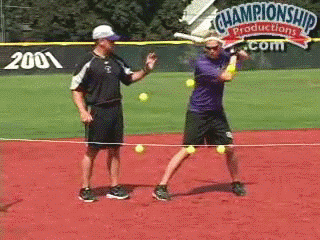I thought it went without saying, but based on some recent posts I’m not so sure ... so let's state the obvious. The ‘red’ line depicted below does not reflect the path of a “riseball traveling through the strike zone” … the words that John used as he traced the path of the three balls with his left hand.

The profile shown here does not come anywhere remotely close to the profile of a real riseball traveling through the strike zone. It's an old belief that has been largely dispelled. If you are teaching hitters to hit balls having a flight similar to that depicted by the 'red' line above, then consider applying the Hanson Principle to pitching and reconsider the notion.
What I find interesting is that there are coaches out there who actually teach this swing for any pitch--bat path straight down to the point of contact, then through the ball. Of course, I believe this type of swing is pure nonsense. However, to each his/her own.




